عندما يتعلق الأمر بالمشاريع الإنشائية والصناعية, ألواح الصلب المجلفن غالبًا ما يكونون الأبطال المجهولين. فقوتها ومتانتها ومقاومتها للتآكل تجعلها لا غنى عنها في مختلف التطبيقات، بدءًا من الأسقف والجوانب وحتى المكونات الهيكلية في المباني والبنية التحتية. في هذه المقالة، سوف نتعمق في هذه المقالة في ألواح الصلب المجلفن، ونناقش كل شيء بدءًا من أنواعها وعملية تصنيعها إلى تطبيقاتها وكيفية اختيار المورد المناسب.
لمحة عامة
يتم طلاء ألواح الصلب المجلفن بطبقة من الزنك لحمايتها من الصدأ والتآكل. تعمل عملية الجلفنة على إطالة عمر الفولاذ بشكل كبير، مما يجعله أكثر متانة في البيئات الخارجية والقاسية. سواءً كنت تعمل على مشروع صغير تقوم به بنفسك أو مشروع تجاري كبير، فإن الفولاذ المجلفن يوفر مادة عالية الأداء بتكلفة منخفضة نسبيًا. ولكن ما الذي يجعل الفولاذ المجلفن متعدد الاستخدامات بالضبط؟
يتلخص الأمر كله في طلاء الزنك. يعمل هذا الطلاء كطبقة مضحية، مما يعني أنه سيتآكل أولاً قبل أن يتآكل الفولاذ الموجود تحته. وهو في جوهره يوفر لك الوقت ويوفر لك المال عند إجراء الإصلاحات والاستبدال، وهذا هو السبب في أنه شائع جدًا في البناء، خاصةً في الأسقف والجدران والتطبيقات الصناعية. دعنا نتعمق أكثر في ما يميز الألواح الفولاذية المجلفنة وكيف يمكن أن تتناسب مع مشروعك القادم.
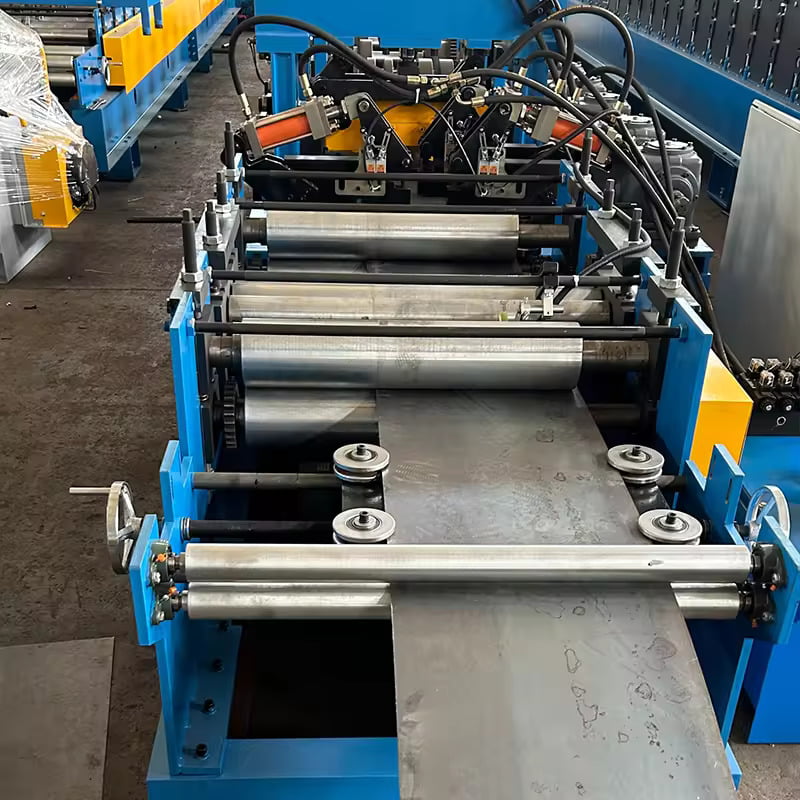
دليل صفائح الحديد المموج
قبل الخوض في تعقيدات الفولاذ المجلفن، تجدر الإشارة إلى ما يلي صفائح الحديد المموج. تُصنع هذه الصفائح، التي غالباً ما يتم الخلط بينها وبين الصلب المجلفن، باستخدام عمليات مماثلة ولكنها تستخدم عادةً لأغراض مختلفة. تُصنع الصفائح المموجة من مجموعة متنوعة من المعادن، بما في ذلك الصلب والألومنيوم، ولها أنماط متموجة متميزة، مما يعزز نسبة قوتها إلى وزنها.
عند المقارنة بين ألواح الحديد المموج والألواح الفولاذية المجلفنة، يشيع استخدام الألواح المموجة في الأسقف نظرًا لطبيعتها خفيفة الوزن. وفي الوقت نفسه، تُستخدم الألواح المجلفنة في التطبيقات الإنشائية التي تتطلب متانة أكبر. الخلاصة الرئيسية؟ كلتا المادتين توفران المتانة، ولكن الألواح المموجة مناسبة بشكل أفضل للتطبيقات خفيفة الوزن والأقل تحملاً، بينما يتفوق الفولاذ المجلفن في البيئات الشاقة.
أنواع الألواح الفولاذية المجلفنة
يمكن أن يكون اختيار النوع المناسب من الألواح الفولاذية المجلفنة لمشروعك أمرًا صعبًا نظرًا لتعدد الخيارات. وفيما يلي تفصيل لبعض الأنواع الأكثر شيوعًا، مصنفة حسب الطلاء والسماكة والاستخدام المقصود.
| نوع اللوح الفولاذي المجلفن | الوصف | سُمك الطلاء (بالميكرومتر) | طلب |
|---|---|---|---|
| الفولاذ المجلفن G90 | طلاء قياسي يستخدم للمشاريع الشاقة | 20-30 ميكرومتر | الأسقف، والجوانب، والهياكل الخارجية |
| الفولاذ المجلفن G60 | طلاء معتدل مناسب للبيئات الأقل عدوانية | 15-25 ميكرومتر | الإنشاءات السكنية، التدفئة والتهوية وتكييف الهواء |
| الفولاذ المجلفن G40 | طلاء خفيف، للاستخدام الداخلي في المقام الأول | 8-15 ميكرومتر | التأطير الداخلي، الهياكل الخفيفة |
| الصلب المجلفن المطلي مسبقًا | فولاذ مجلفن مع طلاء ملون إضافي | 10-30 ميكرومتر (الزنك) + الطلاء | الواجهات الزخرفية، واللافتات المخصصة |
| فولاذ جالفالوم | يجمع بين طلاء الزنك والألومنيوم لزيادة مقاومة التآكل | 15-30 ميكرومتر | البيئات الساحلية والصناعية |
| فولاذ الألزنك | طلاء الزنك وسبائك الألومنيوم | 25-35 ميكرومتر | الظروف الجوية القاسية |
| الصلب المجلفن بالغمس الساخن | مغمورة في الزنك المصهور للحصول على طلاء أكثر سمكًا | 40-60 ميكرومتر | الجسور وخطوط الأنابيب والمعدات الصناعية |
| فولاذ مجلفن كهربائيًا | يستخدم تيار كهربائي لتطبيق طلاء الزنك | 5-10 ميكرومتر | قطع غيار السيارات، التطبيقات الداخلية |
| الصلب المجلفن المدلفن على البارد | الصلب المدلفن على البارد قبل الجلفنة لمزيد من القوة | 20-40 ميكرومتر | تطبيقات هيكلية عالية القوة |
| فولاذ مطلي بسبائك الزنك والحديد والصلب | حديد مضاف في الطلاء لزيادة الصلابة | 15-20 ميكرومتر | معدات صناعية للخدمة الشاقة |
كل نوع له إيجابياته وسلبياته، لذا من الضروري مراعاة عوامل مثل البيئة (الساحلية مقابل الداخلية)، والاستخدام (الإنشائي مقابل الزخرفي)، والعمر الافتراضي المطلوب عند اختيار أفضل نوع لمشروعك.
كيف تُصنع ألواح الصلب المجلفن
إن عملية تصنيع الألواح الفولاذية المجلفنة مذهلة، حيث تمزج بين الكيمياء والفيزياء لإنتاج واحدة من أكثر مواد البناء متانة في السوق. وفيما يلي شرح تفصيلي خطوة بخطوة:
- تحضير الفولاذ: يتم تنظيف الفولاذ الخام أولاً لإزالة أي شوائب مثل الزيت أو الأوساخ أو الصدأ. ويتم ذلك عادةً عن طريق غمر الفولاذ في محلول حمضي، وهي عملية تعرف باسم "التخليل".
- التدفق: بعد التنظيف، يتم غمس الفولاذ في محلول التدفق. يساعد ذلك على التصاق الزنك بالفولاذ بشكل أكثر فعالية أثناء عملية الجلفنة.
- الجلفنة: ثم يتم غمس الفولاذ المحضّر في الزنك المنصهر عند درجة حرارة 450 درجة مئوية (840 درجة فهرنهايت). يشكل الزنك رابطة معدنية مع الفولاذ، مما يخلق طبقة واقية.
- التبريد والفحص: بمجرد طلاء الفولاذ بالزنك، يتم تبريد الألواح وفحصها بحثًا عن أي عيوب أو طلاء غير متساوٍ.
- التخميل: تخضع بعض الألواح الفولاذية المجلفنة إلى معالجة تخميل إضافية، مما يعزز من مقاومة التآكل من خلال تكوين طبقة رقيقة فوق طلاء الزنك.
هذه العملية لا تجعل الفولاذ مقاومًا للتآكل فحسب، بل تضيف أيضًا طبقة من الحماية المادية، وهذا هو السبب في أن الفولاذ المجلفن هو الخيار الأفضل للبيئات الصعبة.
المكونات الرئيسية ووظائفها في ألواح الصلب المجلفن
يلعب كل مكون من مكونات عملية الجلفنة دوراً حيوياً في ضمان متانة الصلب وكفاءته. وفيما يلي تفصيل للمكونات الرئيسية:
| المكوّن | الوظيفة |
|---|---|
| طلاء الزنك | يوفر الحماية من التآكل من خلال العمل كطبقة مضحية |
| الجزء الداخلي الفولاذي | يوفر السلامة الهيكلية والقوة |
| محلول التدفق | يضمن التصاق الزنك بشكل متساوٍ بالفولاذ |
| طبقة التخميل | يضيف مقاومة تآكل إضافية للبيئات عالية التعرض للتآكل |
تعود فعالية الفولاذ المجلفن إلى مدى تفاعل هذه المكونات. فطلاء الزنك لا يحمي فقط بل يحافظ أيضاً على قلب الفولاذ الموجود تحته، مما يجعله حاجزاً فعالاً للغاية ضد العوامل الجوية.
-
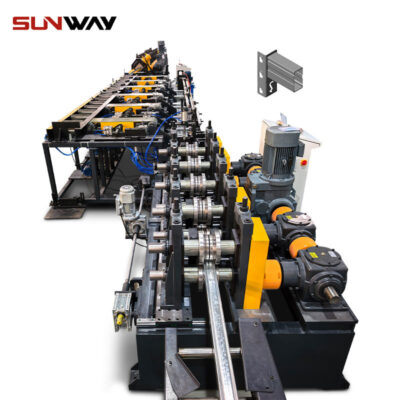 Storage Rack Shelf Box Panel Making Machine Steel Storage Rack System Box Beam Roll Forming Line
Storage Rack Shelf Box Panel Making Machine Steel Storage Rack System Box Beam Roll Forming Line -
 ماكينة تشكيل الطرفية الطرفية لحاجز الحماية على الطريق السريع
ماكينة تشكيل الطرفية الطرفية لحاجز الحماية على الطريق السريع -
 ماكينة تشكيل الأعمدة على الطريق السريع U/C
ماكينة تشكيل الأعمدة على الطريق السريع U/C -
 2 ماكينة تشكيل حواجز الحماية على الطرق السريعة ذات الموجات 2
2 ماكينة تشكيل حواجز الحماية على الطرق السريعة ذات الموجات 2 -
 3 ماكينات تشكيل حواجز الحماية للطرق السريعة ذات 3 موجات
3 ماكينات تشكيل حواجز الحماية للطرق السريعة ذات 3 موجات -
 آلة التشكيل بالدلفنة لكروم العنب
آلة التشكيل بالدلفنة لكروم العنب -
 آلة تشكيل لفة Sigma Purlin قابلة للتغيير ذات الحجم الأوتوماتيكي
آلة تشكيل لفة Sigma Purlin قابلة للتغيير ذات الحجم الأوتوماتيكي -
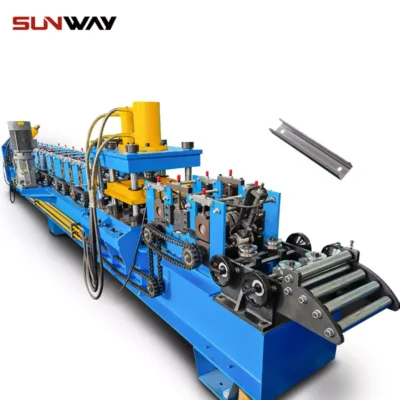 C القسم يستعد أوميغا تخزين الرف تستقيم آلة تشكيل آخر لفة
C القسم يستعد أوميغا تخزين الرف تستقيم آلة تشكيل آخر لفة -
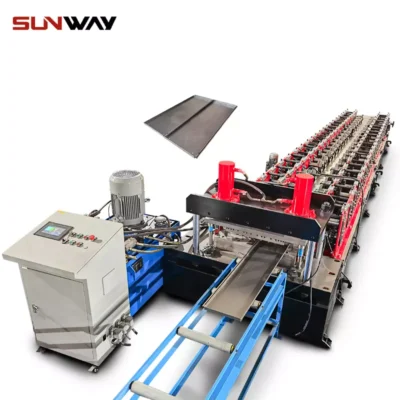 آلة تشكيل لوحة الصندوق الفولاذية
آلة تشكيل لوحة الصندوق الفولاذية
سرعة الماكينة وكفاءتها في إنتاج الصلب المجلفن
تُعد سرعة وكفاءة الماكينات المستخدمة في إنتاج ألواح الصلب المجلفن أمرًا بالغ الأهمية لكل من الجودة والفعالية من حيث التكلفة. فيما يلي نظرة على سرعات الماكينات النموذجية وكيفية تأثيرها على الإنتاج.
| سرعة الماكينة (بالمتر/الدقيقة) | الكفاءة (%) | تطبيق الإنتاج |
|---|---|---|
| 100 م/دقيقة | 85% | خطوط إنتاج كبيرة الحجم |
| 70 م/دقيقة | 90% | حجم معتدل مع التركيز على الجودة |
| 50 م/دقيقة | 95% | التطبيقات الدقيقة التي تتطلب تشطيبات عالية الجودة |
| 30 م/دقيقة | 98% | إنتاج الألواح المخصصة أو المتخصصة |
كلما زادت سرعة الماكينة، زادت الألواح التي يمكنك إنتاجها، ولكن في بعض الأحيان يأتي ذلك على حساب الدقة. تميل السرعات الأبطأ إلى إنتاج ألواح أكثر اتساقًا وأعلى جودة ولكن بتكلفة أعلى.
تخصيص المعلمات الميكانيكية للألواح الفولاذية المجلفنة
اعتمادًا على مشروعك، قد تحتاج إلى معايير ميكانيكية مخصصة لألواحك الفولاذية المجلفنة. قد يتضمن ذلك تعديل السُمك أو القوة أو الخواص الميكانيكية الأخرى. إليك دليل سريع لما يمكن تخصيصه.
| المعلمة | الوصف | نطاق قابل للتعديل |
|---|---|---|
| سُمك اللوحة | سماكة النواة الفولاذية | 0.2 مم - 2.5 مم |
| سُمك الطلاء | سُمك طبقة الزنك | 5 ميكرومتر - 60 ميكرومتر |
| قوة الشد | قوة الفولاذ | 250 ميجا باسكال - 550 ميجا باسكال |
| العرض | عرض اللوحة | 500 مم - 1500 مم |
| الطول | طول اللوحة (قطع مخصصة) | متغير |
يسمح لك تخصيص هذه المعلمات بالحصول على المواصفات الدقيقة اللازمة لمشروعك، سواء كان ذلك من أجل المتانة الهيكلية أو المظهر الجمالي.
تطبيقات ألواح الصلب المجلفن واستخداماتها
أحد أفضل ما يميز الألواح الفولاذية المجلفنة هو تعدد استخداماتها. حيث يمكن استخدامها في مجموعة واسعة من التطبيقات، سواءً في الداخل أو في الهواء الطلق، في الأماكن التجارية والسكنية والصناعية. وفيما يلي بعض الاستخدامات الأكثر شيوعاً:
| طلب | تفاصيل |
|---|---|
| الأسقف والجوانب | متين ضد الظروف الجوية، مثالي للمباني السكنية والتجارية |
| الجسور والبنية التحتية | مقاومة عالية للتآكل تجعلها مثالية للهياكل الخارجية مثل الجسور |
| قطع غيار السيارات | غالبًا ما يستخدم في إطارات السيارات وألواح الهيكل نظرًا لخصائصه المقاومة للصدأ |
| المباني الزراعية | مثالي للحظائر والصوامع وغيرها من المخازن الزراعية بسبب متانته |
| المبارزة | الأسوار الفولاذية المجلفنة تدوم لفترة أطول من الأسوار الخشبية التقليدية |
| معدات صناعية | تستخدم في تصنيع الآلات والمعدات التي تعمل في البيئات المسببة للتآكل |
تستفيد كل من هذه التطبيقات من القوة الأساسية للصلب المجلفن ومقاومته للصدأ، مما يضمن استمرار الهياكل لفترة أطول وتتطلب صيانة أقل بمرور الوقت.
تركيب الألواح الفولاذية المجلفنة وتشغيلها وصيانتها
على الرغم من سهولة التعامل مع الألواح الفولاذية المجلفنة نسبيًا، إلا أن التركيب والتشغيل والصيانة المناسبة ضرورية لزيادة عمرها الافتراضي وأدائها إلى أقصى حد. إليك ما تحتاج إلى معرفته:
| الخطوة | تفاصيل |
|---|---|
| التركيب | تأكد من محاذاة الألواح وتثبيتها بشكل صحيح لتجنب نقاط الضغط التي قد تؤدي إلى تشققات أو اعوجاج. استخدم مثبتات مجلفنة لمنع الصدأ. |
| العملية | راقب أي علامات مبكرة للتآكل، خاصةً في البيئات عالية الرطوبة. |
| الصيانة | افحص بانتظام بحثاً عن أي أضرار أو بقع صدأ، خاصةً عند الحواف المقطوعة أو عند التقاء الألواح بمواد أخرى. تنظيف السطح بشكل دوري سيمنع تراكم الحطام والرطوبة. |
إن اتباع هذه الخطوات سيضمن لك أداء ألواحك الفولاذية المجلفنة بأفضل حالاتها، مما يمنحك سنوات من الخدمة المتينة بأقل قدر من الصيانة.
كيفية اختيار المورد المناسب للألواح الفولاذية المجلفنة
اختيار مورد لألواح الصلب المجلفن أمر بالغ الأهمية لضمان حصولك على مواد عالية الجودة بسعر معقول. إليك ما يجب البحث عنه عند اختيار المورد:
| العامل | تفاصيل |
|---|---|
| السمعة | ابحث عن موردين لديهم سجل حافل في تقديم منتجات عالية الجودة. تحقق من المراجعات واطلب التوصيات. |
| نطاق السعر | قارن الأسعار من عدة موردين. في حين أن الأرخص قد يبدو أفضل، ضع في اعتبارك دائمًا الجودة. توقع أن تتراوح الأسعار ما بين $600 إلى $1,000 للطن الواحد، حسب النوع. |
| خيارات التخصيص | اختر المورد الذي يوفر التخصيص لتلبية الاحتياجات المحددة لمشروعك. |
| الشهادات | تأكد من أن المورد معتمد من قبل معايير الصناعة مثل ASTM أو ISO لضمان جودة المنتج. |
إن الشراكة مع المورد المناسب لن تضمن لك الحصول على أفضل المواد لمشروعك فحسب، بل ستضمن لك أيضاً الحصول على خدمة عملاء ممتازة ودعم ممتاز طوال العملية.
الإيجابيات والسلبيات: ألواح الصلب المجلفن مقابل المواد الأخرى
دعنا نقارن ألواح الفولاذ المجلفن بمواد البناء الشائعة الأخرى مثل الألومنيوم والخشب والفولاذ المقاوم للصدأ لنرى أين تقف من حيث المزايا والقيود.
| المواد | المزايا | القيود |
|---|---|---|
| ألواح الصلب المجلفن | متانة عالية، ومقاومة للتآكل، وفعالة من حيث التكلفة | يمكن أن يصدأ عند الحواف المقطوعة، أثقل من البدائل |
| ألومنيوم | خفيف الوزن ومقاوم للتآكل | أقل قوة من الفولاذ، وأكثر تكلفة |
| خشب | جاذبية جمالية، قابلة للتخصيص بسهولة | عرضة للتعفن، ويتطلب صيانة متكررة |
| الفولاذ المقاوم للصدأ | مقاومة شديدة للتآكل وقوية للغاية | باهظة الثمن وثقيلة |
عندما تكون المتانة والفعالية من حيث التكلفة من أهم أولوياتك، غالباً ما يكون الفولاذ المجلفن هو الخيار الأفضل. ومع ذلك، بالنسبة للمشاريع التي يكون فيها الوزن أو المظهر أكثر أهمية، قد تكون مواد مثل الألومنيوم أو الخشب هي الأنسب.
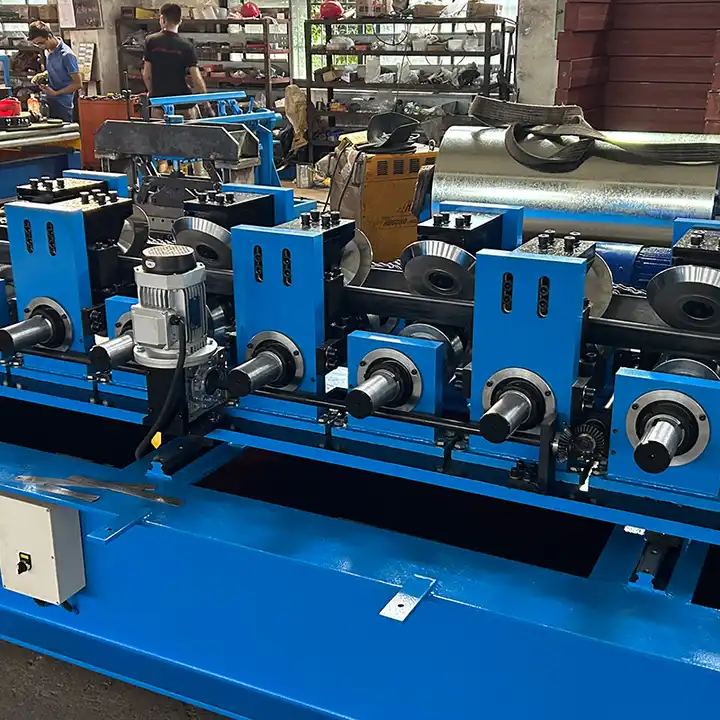
الأسئلة الشائعة
| سؤال | الإجابة |
|---|---|
| في ماذا يُستخدم الفولاذ المجلفن؟ | يُستخدم الفولاذ المجلفن في مجموعة متنوعة من التطبيقات، بما في ذلك الأسقف والأسوار وقطع غيار السيارات والجسور. خصائصه المقاومة للصدأ تجعله مثاليًا للبيئات الخارجية والصناعية. |
| كم من الوقت تدوم ألواح الصلب المجلفن؟ | مع الصيانة المناسبة، يمكن للألواح الفولاذية المجلفنة أن تدوم من 20 إلى 50 عاماً حسب البيئة وسماكة طلاء الزنك. |
| هل الفولاذ المجلفن أفضل من الفولاذ المقاوم للصدأ؟ | يعتمد ذلك على التطبيق. فالفولاذ المجلفن أكثر فعالية من حيث التكلفة وأخف وزناً، بينما يوفر الفولاذ المقاوم للصدأ مقاومة فائقة للتآكل والقوة ولكن بتكلفة أعلى. |
| هل يمكن طلاء ألواح الصلب المجلفن؟ | نعم، يمكن طلاء الفولاذ المجلفن، ولكنه يتطلب طلاءً تمهيديًا خاصًا لضمان التصاق الطلاء بشكل صحيح. وتتوفر أيضاً خيارات الطلاء المسبق. |
| هل الألواح الفولاذية المجلفنة صديقة للبيئة؟ | نعم، إن الفولاذ المجلفن قابل لإعادة التدوير، كما أن طلاء الزنك يقلل من الحاجة إلى الاستبدال المتكرر، مما يجعله خياراً أكثر استدامة مع مرور الوقت. |
في الختام, ألواح الصلب المجلفن توفر توازنًا ممتازًا بين القوة والمتانة والقدرة على التحمل والقدرة على تحمل التكاليف، مما يجعلها الخيار الأفضل لمجموعة كبيرة من الاستخدامات. سواء كنت تقوم ببناء سقف جديد أو تدعيم جسر أو تصنيع معدات صناعية، فإن النوع المناسب من الفولاذ المجلفن يمكن أن يحدث فرقاً كبيراً.
